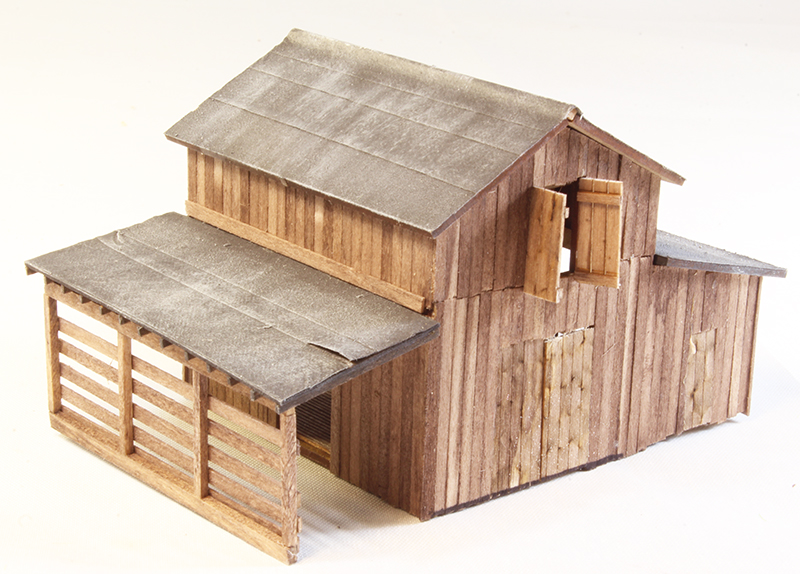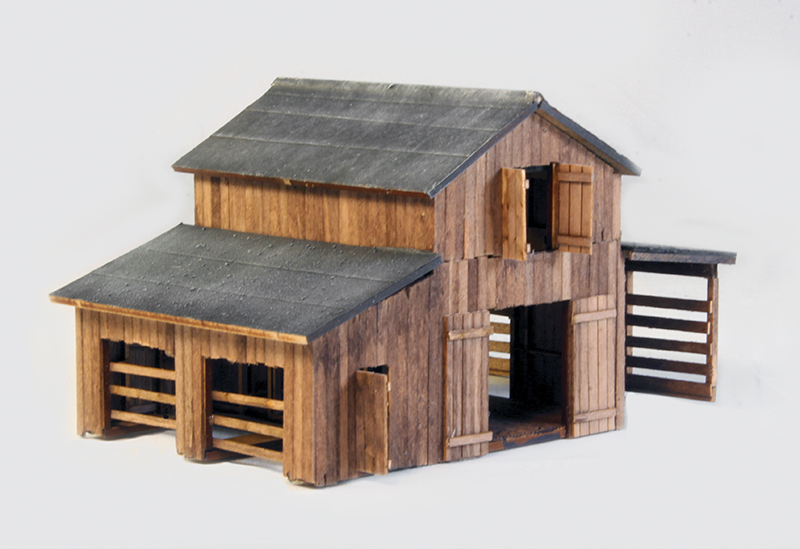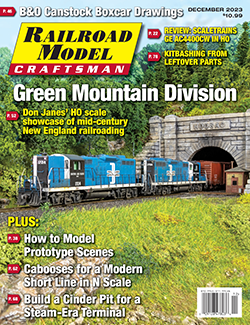Story and Photos by George Riley
While not following any particular prototype, Foley’s Barn is representative of the many common barns that can be seen nationwide. Dating well back to the mid-1800s, if not earlier, these simple structures, though often well-weathered, are still a part of the landscape in our modern era.
These structures consist of a central rectangular structure with a hayloft over the main floor. A bump-out for additional stalls for livestock would often be added to either one or both sides as the farm grew. As powered farm machinery was adopted, an open-sided shed would be added to the main building. Foley’s Barn follows these common practices with an annex on one side and a shed on the other.

Banta’s model follows an innovative assembly design using a laser-cut MDF core for the interior structure over which individual boards are attached. This system allows the model to be quickly and easily assembled while delivering a scratchbuilt-like appearance that is prized by modelers. The model is a weatherer’s delight since it is easy to capture worn, rotted, and broken boards using the board-on-frame design of the kit. As with nearly all laser kits, the first stage of building the model is the preparation phase. All of the parts were pre-stained on their carrier sheets with a penetrating stain and left for several days to fully dry and cure.
The next stage of construction is to assemble the interior structure and floor. This is easily accomplished with the individual precision-cut pieces almost literally falling together. When the structure dries, individual planks are added to the exterior of the walls. Some trimming is necessary, particularly to the peaks of the gable ends. Assembly of the main structure and side annex is straightforward and can be quickly accomplished, bearing in mind that the builder may want to “build in” some of the weathering by adding broken and “rotted” boards…




